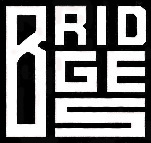There are many ways to create video modules.
Introduction
I have wanted to produce video modules for many years. I saw early digital editing systems and became very excited. But the cost of this technology and the effort required to master the software precluded its use. Equally important was the limitation of distributing video content.
Slowly, digital video technology became less expensive. And video servers, primarily YouTube, opened the distribution channel in ways that we never imagined.
I’ve returned to this medium. Slowly. Mostly using rostrum camera techniques. And I'm also trying to capture video sequences using a camera mounted on a gimbal stabilizer.
Travel, Event, and Educational Videos
I have taken digital cameras many places. Generally, the photos that I’ve captured are bundled in sets of still images. Increasingly, I use these bundles to create stories. These stories are like illustrated magazines.
I’m beginning to document my travels by using bundles of photos to create videos. The links on the following pages provide access to my growing collection of video modules.
Honolulu Harbor, 24 Hour Time Lapse (10:04)
Time lapse of 24 hours at Honolulu Harbor, Oahu, Hawaii. You'll see ships of all sizes enter and exit the port. The clouds stream overhead. Watch the moon set as morning approaches. Check the surf on the beach at Sand Island. Planes using the HNL runways flash by quickly. Vehicles zip along the downtown streets.
Carla’s Birthday (4:25)
Our good friend Carla had her birthday celebration in Valdez, AK. We went along to join the fun. There were five boats full of people and dogs. It was an epic birthday celebration.
The Flipped Classroom (10:37)
My talk at the 2018 meeting of the Society for Economic Botany (SEB). This outlines how Text to Speech can be used to narrate PowerPoint presentations. These presentations are then modules used for learning materials outside the classroom.
Background information at: https://sites.google.com/view/seb-flipped-classroom
No More Bullet Slides (5:07)
A video supplement to my talk at the 2018 meeting of the Society for Economic Botany. This is a quick introduction to the Assertion-Evidence format for presentation materials. It also demonstrates the use of Text to Speech technology.
Text to Audio (13:28)
A detailed description of how to use the Amazon Polly service to convert text to audio and then add the audio files to a set of PowerPoint slides. This is part of a strategy for the flipped classroom. A supplemental presentation for the 2018 meeting of the Society for Economic Botany
The National Orchid Garden (4:55)
Singapore is (arguably) the orchid capitol of the world. The best place to see Singapore’s orchids is at their National Orchid Garden, located inside the Singapore Botanic Garden.
King Kamehameha Floral Parade, 2015 (8:33)
Each year, on the celebration of King Kamehameha’s birthday, there is a parade in Honolulu. A unique and pervasive element in this parade are the pa`u rides. These are women mounted on horses who are wearing a unique style of garment and spectacularly adorned by flowers.
Ranunculus at Flower Fields (2:28)
Virtually all of the commercially-produced Ranunculus are grown at Flower Fields in Carlsbad, California. The fields are planted as broad stripes of primary colors. Most flower of each color are nearly identical. Some flowers, however, are quite different.
Instructional Videos
I believe that there is both a huge need for good instructional videos as well as great opportunity for creating specific titles.
Video servers, such as YouTube, have erased one of the major limitations in storing and delivering video modules. Camera technology, including the use of smartphones, has brought video creation to many people. Ancillary equipment, such as gimbal stabilizers, improves the quality to near-professional standards.
There are many ways to create instructional videos. The early videos linked here were built from sets of still images; some were photographs while others were drawings made in PowerPoint. A few images were screen-grabs.
One of the biggest challenges has been narration. Experiments on text-to-speech (TTS) technology have shown promise but licensing requirements and cost prohibit the use of this technology.
Kaua`i Field Trips (13:54)
This is a technology demonstration using video taken in January, 2016, supplemented with diagrams from PowerPoint and still photography. The images show two days of field trips by students from North Lake College (Dallas, TX) to the Waimea Canyon area on Kaua`i. The video clips were taken using a gimbal for stabilization.
The components were assembled using ProShow Producer.
Showing Data on Google Earth (Part 1: 4:28; Part 2: 9:20)
This two part video series provides an overview of some of the data representations (Part 1), followed by a step-by-step demonstration of the process (Part 2).
Community Analysis (Part 1: 10:01; Part 3: 7:58)
This two part video series provides an overview of the conceptual basis of Community Analysis techniques (Part 1), especially in the context of Ethnobotanical Research, followed by a step-by-step demonstration of the process using the PAST software program (Part 3). There is no Part 2. Created in 2013
Contextual Photography (19:07)
This video was created for the Society for Economic Botany annual meeting in 2014. The focal message is that photography that supports Ethnobotanical research should not focus just on details (like pictures of flowers) but should show the context of the study. There are many techniques available to do this, some of which involve new technology.








